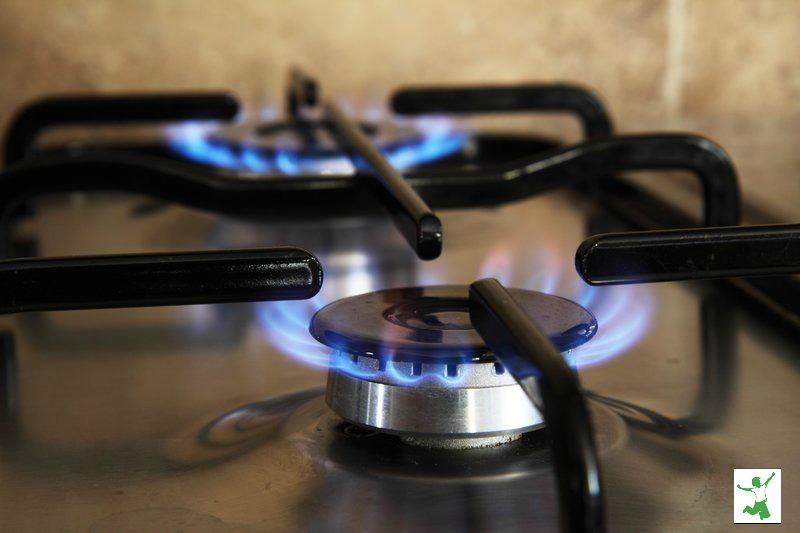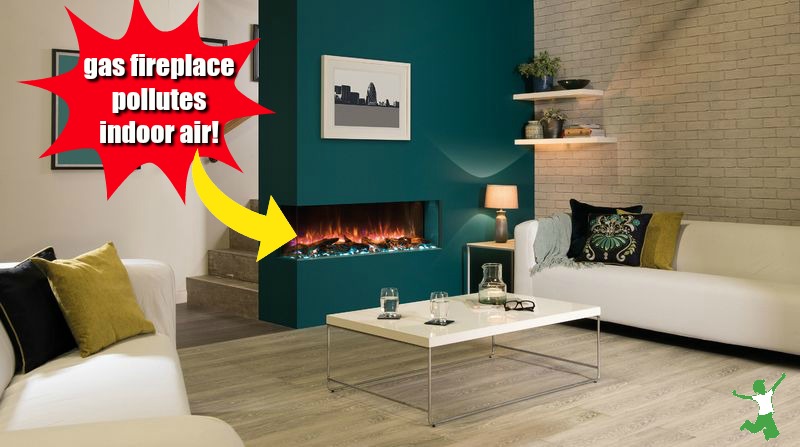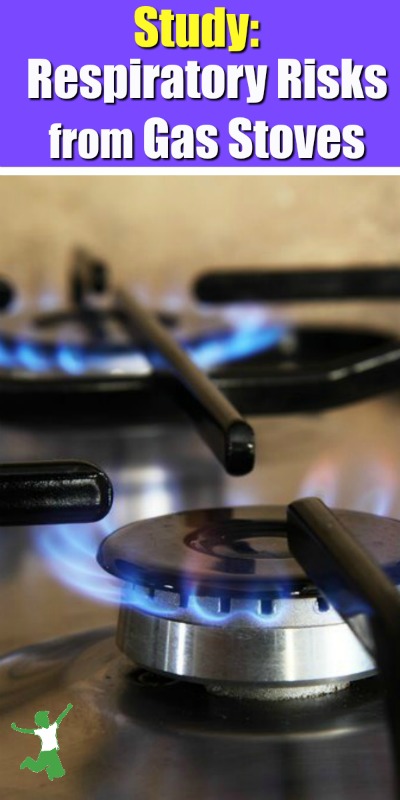
The measurable indoor pollutants generated by gas cooktops and ovens are 50-400 percent higher than homes without these types of appliances according to scientists. These emissions occur even when the stove is not in use. How to stay safe if you have children or a pre-existing respiratory condition.
I’ve written before about the EMF risks from induction stoves and why it is a better choice to use a basic (and cheaper) electric stove instead.
But what about gas stoves? These types of appliances have been in widespread use in Europe and the United States since early in the last century. Hence, most people consider them safe due to longevity alone.
But, is this really true?
Some new studies of indoor air pollution triggered by gas stove use give reason for a rethinking of gas-based appliances.
Homes with Gas Stoves Have Significantly Dirtier Indoor Air
According to a May 2020 review by the Rocky Mountain Institute, homes that use gas stoves have indoor air that is 2-5 times dirtier than outdoors.
Shockingly, this new review actually brings together decades of scientific research demonstrating that toxic pollutants are released when gas stoves are in use. These emissions absolutely have a negative impact on human health. (1)
In other words, this information has been known for over 20 years!
However, the research is only just now getting attention due to the realization that respiratory health and clean air are crucial to avoiding/surviving exposure to COVID-19.
And, with people spending more time and cooking more meals at home, the risks from gas stoves are greater than ever.
The lead author of the study, Brady Seals, writes that:
As a global pandemic shines a new light on health, air pollution, and the disproportionate impacts on vulnerable populations, it exposes the need to protect the public from risks both outside and inside the home. (2)
Types of Pollutants
There are three types of pollutants released by gas stoves.
- Nitrogen dioxide (NO2)
- Carbon monoxide
- Particle pollution
Exposure is particularly devastating for children and those living in smaller or older homes with less square footage and/or poorer ventilation.
Let’s take a look at some of the impacts of these pollutants on health.
Health Impacts of Gas Stoves
Nitrogen dioxide, the primary gas stove pollutant produced both on the cooktop and oven has the potential to trigger the following health effects, particularly in children: (3)
- Increased risk of childhood asthma (both current and lifetime)
- Aggravated respiratory symptoms (wheezing, coughing, chest tightness, difficulty breathing)
- Irritated airways
- IQ learning deficits
- Increased susceptibility to lung infections
- Deleted tissue antioxidant defenses (which protect the respiratory tract)
- Changed lung function
- Cardiovascular effects
- Increased susceptibility to allergens
There are three reasons why children are more susceptible to air pollution from gas stoves than adults.
First, children have higher rates of breathing and are generally much more physically active.
Secondly, their respiratory and immune systems are still developing.
Third, their bodies are smaller. Hence, children have a higher lung surface to body weight ratio than adults. (4)
Measured Emissions from Gas Cooktops and Ovens
The outdoor standards for NO2 emissions exposure are 100 parts per billion (ppb) for the United States (EPA) and 60 ppb for Canada.
Let me repeat that … these are the levels for outdoors.
Here are the indoor measured NO2 emissions levels when a gas stove is performing the following functions: (5)
- Baking cake in the oven (230 ppb)
- Roasting meat in the oven (296 ppb)
- Frying bacon on the stovetop (104 ppb)
- Boiling water (184 ppb)
Here’s the most disturbing piece of information. Even when a gas cooktop or oven is not cooking anything, it is producing NO2 emissions according to the study! (6)
- Gas cooktop (no food): 82-300 ppb
- Gas oven (no food): 130-546 ppb
Analysis reveals that gas stoves continue to pollute indoor air at levels significantly above safety guidelines even when otherwise not in use.
The author of the study puts it this way:
Homes with gas stoves can have nitrogen dioxide concentrations that are 50–400 percent higher than homes with electric stoves. The US Environmental Protection Agency (EPA) recently strengthened its assessment of nitrogen dioxide, finding a causal relationship between short term exposures and respiratory effects. (7)
Gas Fireplaces a Risk Too!
Note that anything in your home that uses gas is going to pose a similar risk to your indoor air.
For example, the popular gas-driven indoor fireplaces would add toxic pollutants to indoor air as well.

Go Electric for Cooking or At Least Do This
With induction stoves a source of electromagnetic toxicity and gas stoves conclusively proven to pollute indoor air even when not in use, you really need to make plans to go electric to be safe.
This is especially the case if you have young children or someone in the household with a pre-existing respiratory condition.
Fortunately, electric stoves are some of the most inexpensive models on the market. If the budget is tight, I suggest a visit to your local scratch and dent appliance center, where you can probably pick up an electric stove for just a few hundred dollars.
But, if you rent or otherwise not in a position to change out your cooking appliance at this time, at the very least, invest in an air purifier that is able to remove gas stove pollutants like NO2, carbon monoxide, and particulate matter from the air. This brand of air purifier is also excellent. I’ve personally vetted both models.
Note that depending on the size of your home and the number of gas-driven appliances, you may need more than one. We have one air filter to cover every 500 square feet of living space.

References
(1-6) Gas Stoves: Health and Air Quality Impacts and Solutions
(7) Indoor Air Pollution. The Link Between Climate and Health
(8) Experts are Sounding the Alarm about the Hidden Dangers of Gas Stoves








I am with you on this, K. The above article only supports the research done by government-backed far-left socialist groups who want to electrify everything in our country. I looked at the bios of the leaders at RMI and perused their website to satisfy my own curiosity. Their organization is all about climate change and they want to be the unheralded leaders in an industry whose primary goal is to wholly and completely eliminate gas and oil in any and all forms. They are even in cahoots with China, a country widely known for population control and horrific human rights abuses against their own citizens. As this is a hotly debated issue, I would have welcomed a more balanced article that explores other sides of this topic. In the meantime, I am keeping my gas stove…never have had an issue!
I couldn’t have said it better myself. Well done.
Thank you for this article, it is very helpful! We are currently looking at a new stove and I am ready to make the switch from non-ventilated gas (which I believe has aggravated many unresolved health issues in myself and my children) to electric. But I don’t want to trade one problem for another. Can you recommend some low EMF electrical stoves, please? Or a site that does? Thank you in advance.
No Food means no food on the stove while testing/operating.